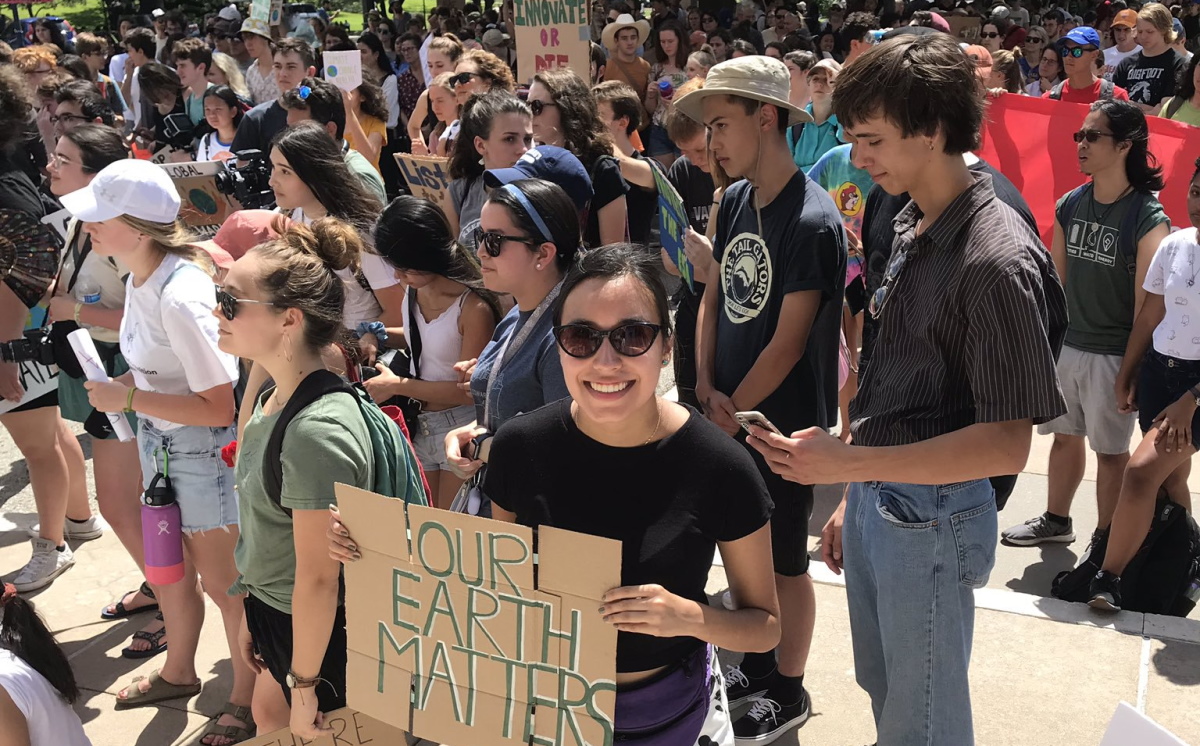
Austin Climate Strike, September 2019
Advocates of urgent, concerted action against climate change – and preparation for its impacts – have argued for years that the multifaceted phenomenon should be called a “crisis” or “emergency.”
They’ve finally started having major success in that campaign. Britain’s The Guardian newspaper decided in May, for example, that its style guide would favor “climate emergency” over “climate change.” And CNN started referring routinely to “the climate crisis.”
Oxford Dictionaries, which tracks such things, announced last month that “climate emergency” was its “word of the year for 2019,” reflecting the “greater immediacy” of discussions about the issue. Usage of “climate emergency” increased by 10,796 percent, Oxford Dictionaries said. “Climate crisis” and “climate action” were among the runners-up.
Municipal officials in Austin, the first Texas city to adopt a climate action plan, are participants in the shift in terminology.
+++
By Ellen Airhart
Texas Climate News
Austin declared a climate emergency in August. This resolution by the city council is another step in the capital city’s history of working towards a future with fewer and less devastating environmental disasters. It also meant Austin was joining others in adopting a pointed term to address the issue.
This year has brought stepped-up demands for stronger climate action on the city, state and federal level, including increased calls by activists for government entities, news organizations and others to refer to climate change explicitly and routinely as a “crisis” and “emergency.”
This September, students skipped school to attend climate rallies and protests at locations including the Texas Capitol. Hundreds of journalism outlets brought more stories about climate change to a combined potential audience of more than a billion people through a project called “Covering Climate Now,” hosted by The Nation and Columbia Journalism Review. Austin’s resolution meant the city joined 12 countries and more than 1,000 local governments worldwide in declaring a climate emergency.
While formally naming the issue in that way is an act that doesn’t mandate specific policies like cutting greenhouse-gas emissions, supporters in Austin say it strengthens the city’s position in contrast to state and federal governments that offer little support for climate action.
“Truthfully, declaring a climate emergency is a symbolic act,” said Kaiba White, an Austin-based energy policy and outreach specialist for Public Citizen, an advocacy group. “And it will be up to city council as well as staff and the community to transform that symbolic act into something meaningful.”
The emergency declaration has the potential to impact Austin’s water, energy, and waste programs, White said. “But by itself, it does not do that. It is a statement about priorities.”
Austin and other parts of Central Texas have already begun to suffer from the effects of climate change, with scientists concluding it has aggravated weather extremes including episodes of flooding and the record drought of 2011.
Increased rainfall in the region prompted the National Weather Service in 2018 to redefine Austin’s 100-year rainfall event. A 100-year event is a downpour that occurs every 100 years on average, with a one percent chance in any given year. Previously, the service said 10 inches of rain in 24 hours qualified as Austin’s 100-year storm. Now, it says the city can expect 13 inches of rain in a 100-year event.
Wildfire risk is also increasing. Austin is currently one of the most at-risk cities in the country for wildfire, and hotter, drier summers are only increasing the danger. “We’ve had a wet spring, and [then] a very dry summer,” says District 10 Council Member Alison Alter, who was the lead sponsor of the climate emergency resolution. “So when you have a wet spring, you have even more brush that then dries out, which creates more of a powder keg for fire.”
The resolution acknowledges that climate change will affect different Austin communities in a variety of ways, and it outlines steps to protect those who are most vulnerable. Low-income neighborhoods are more likely to be in floodplains. The city council is working to designate “resilience hubs,” trusted community buildings in low-to-moderate income areas where people can gather and receive supplies and information during emergencies.
Despite the lack of state and federal funding, Austin has made significant commitments to cut waste and fossil fuel emissions. The city vows to use at least 65 percent renewable energy by 2027 and emit zero greenhouse gas emissions by 2050. The city is creating a climate resilience plan with a designated climate resilience officer. It has resolved to produce zero waste by 2040 and switch to electric public transportation.
The council’s “emergency” resolution includes specific directions to the city manager for an upcoming update to the city’s climate action plan, such as “provid(ing) options for more aggressive interim targets to accelerate the reduction pathway to achieve net-zero (emissions) by 2050.”
Alter said she hopes the emergency resolution will both help Austin deal with the effects of climate change and help prevent it from becoming more severe. However, there are limits to the power of city government. State bills addressing climate change consistently fail to gain traction in the Legislature, even the mildest measures that would simply launch planning for worse heat and flooding, although polls indicate the issue is becoming an increasing concern for Texas voters. The current federal administration has rolled back climate regulations.
“I believe that we’re well equipped to meet the challenge in the levers that we control, but could do a whole lot more with support and reinforcement from the state and national level,” Alter said.
+++++
Ellen Airhart is a contributing editor of Texas Climate News.
